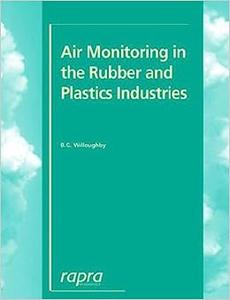
Free Download B. G. Willoughby, "Air Monitoring in the Rubber and Plastics Industry"
English | 2003 | ISBN: 1859573746 | PDF | pages: 256 | 8.4 mb
Health, safety and the environment are key driving factors in industry in the 21st Century. Monitoring of exposure to chemicals in the workplace and in emissions from factories is used to calculate exposure to possible chemical toxins including carcinogens. Other factors must also be considered in chemical monitoring, such as the actual risk of harm and possible areas of high exposure, such as when opening ovens or dealing with equipment problems, situations where a build up of chemical can occur in an enclosed environment.
Different types of monitoring equipment and ways of monitoring are available. For example, static monitoring can be carried out in one place over a period of time, or a recorder can be placed on an employee near to the breathing zone to measure individual exposure to chemicals. There are many factors which can lead to inaccurate interpretation of results from using equipment which does not distinguish between critical chemicals or which is not sufficiently sensitive, to not taking into account local factors such as employee’s smoking habits.
To measure a chemical in air, it must first be trapped in some way and the trapped sample analysed. There are different methods of trapping from simple grab sampling of air to the use of filters, absorbents and adsorbents. The trapped sample must be analysed and a variety of methods are available. Chemicals present at low levels can still be toxic. The aim is to choose a method that is capable of measuring across the range of exposure levels of concern. Government bodies such as NIOSH and OSHA in the USA and the HSE in the UK have published approved methods for specific chemical species.
There are many chemicals in use in the rubber and plastics industries from the monomers polymerised to form plastics and rubbers, to the additives used to enhance the polymer properties. In addition, other potentially hazardous substances are formed by reactions between these base chemicals and with air. The formation of suspected carcinogenic nitrosamine compounds by some rubber formulations is a case in point.
This book examines the types of chemicals found in the polymer industry and the potential hazards. It goes on to explain the common chemical reactions of concern to health and safety. Monitoring methods are described in some detail together with their limitations. This is essentially a practical book giving a background to the chemistry of the polymer industry and chemical monitoring methods. It will be of use to workers and managers across the industry in explaining what should be done and why. It will be of particular interest to occupational health and environmental monitoring specialists.










Leave a Reply
You must be logged in to post a comment.